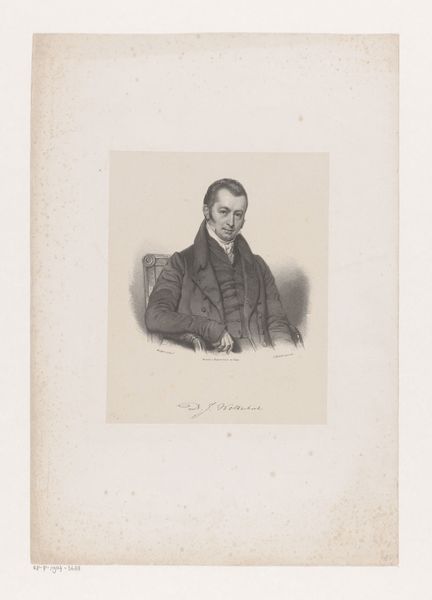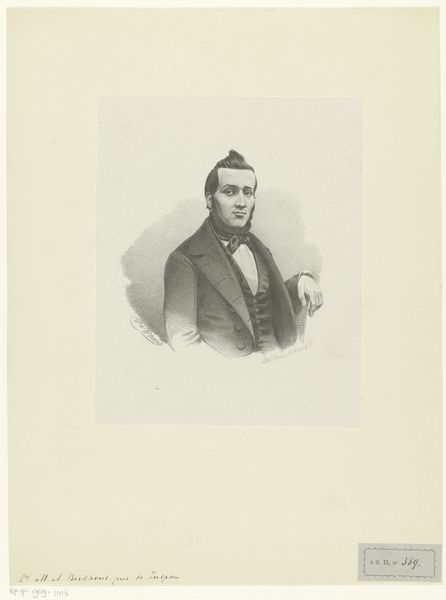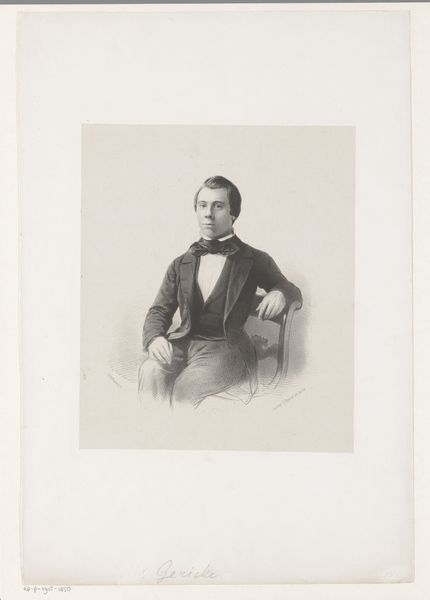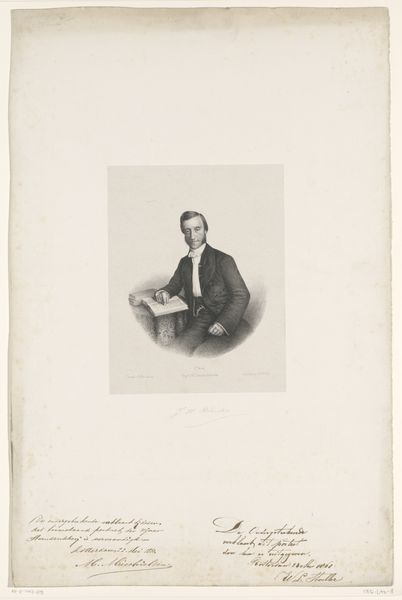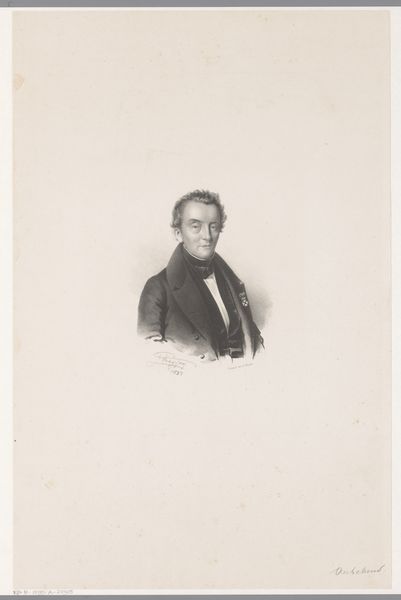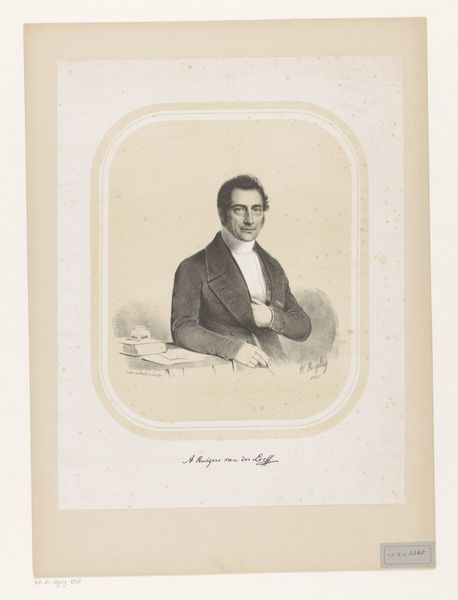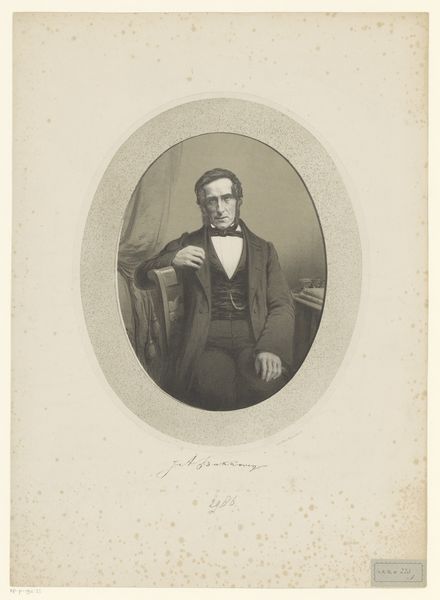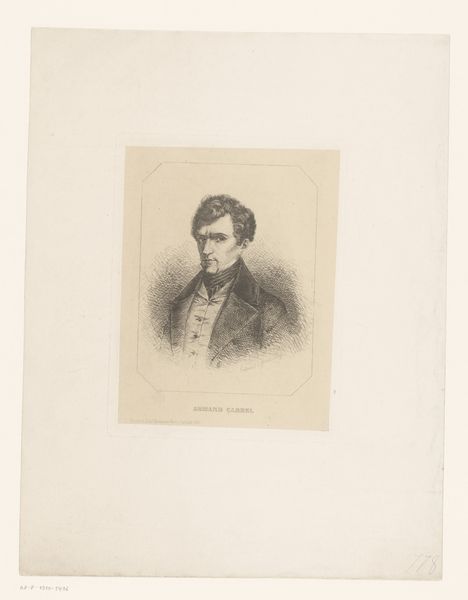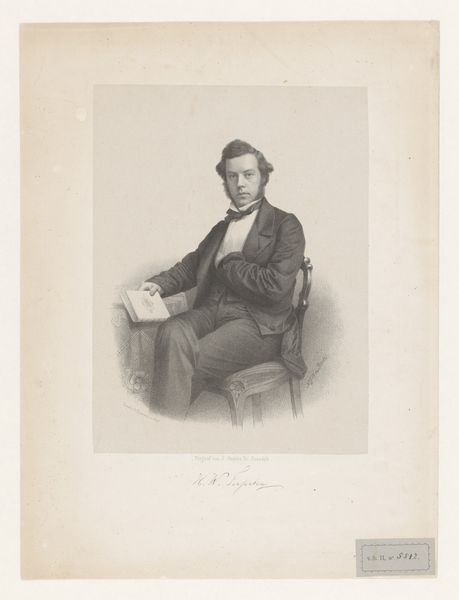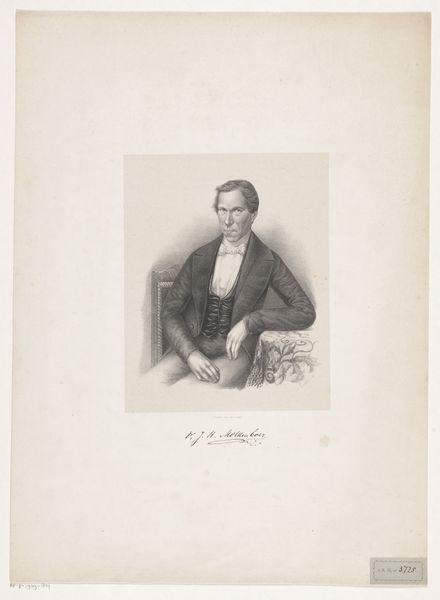
Dimensions: height 280 mm, width 208 mm
Copyright: Rijks Museum: Open Domain
Editor: This is a pencil drawing titled "Portret van Johannes Hendrik Brandes" from between 1834 and 1876. The realism is remarkable, almost photographic in its detail, despite being created only with pencil. I find the overall mood quite reserved, almost stoic. How do you interpret this work? Curator: It’s interesting to consider this portrait within the context of the evolving public role of imagery during that period. Portraiture, particularly through reproducible means like drawing and printmaking, began to democratize access to representation. This allowed for the dissemination of ideals and the construction of public figures, what role might this have played in his community? Editor: I hadn't thought about it that way. I guess having your portrait drawn wasn't just a personal act. How did art galleries contribute? Curator: Precisely! As portraiture became more accessible, so did art galleries, both feeding a growing desire for access to prominent figures and artistic works. Realism, which aimed for accurate depiction, resonated with an increasingly literate middle class who sought relatable imagery. How does that level of access change perspectives on political representation? Editor: It's amazing to think how the art world and public sphere became intertwined! Curator: Indeed. It showcases the public role of art, moving from exclusive displays to works for more diverse audiences and agendas. Thinking about our digital era, this historical context underscores how visual representation continues to shape public perception and, inevitably, impacts our socio-political landscape. Editor: It definitely provides new insights. Thanks! Curator: My pleasure! Seeing art as connected to political spheres opens avenues for critical engagement and analysis.
Comments
No comments
Be the first to comment and join the conversation on the ultimate creative platform.


